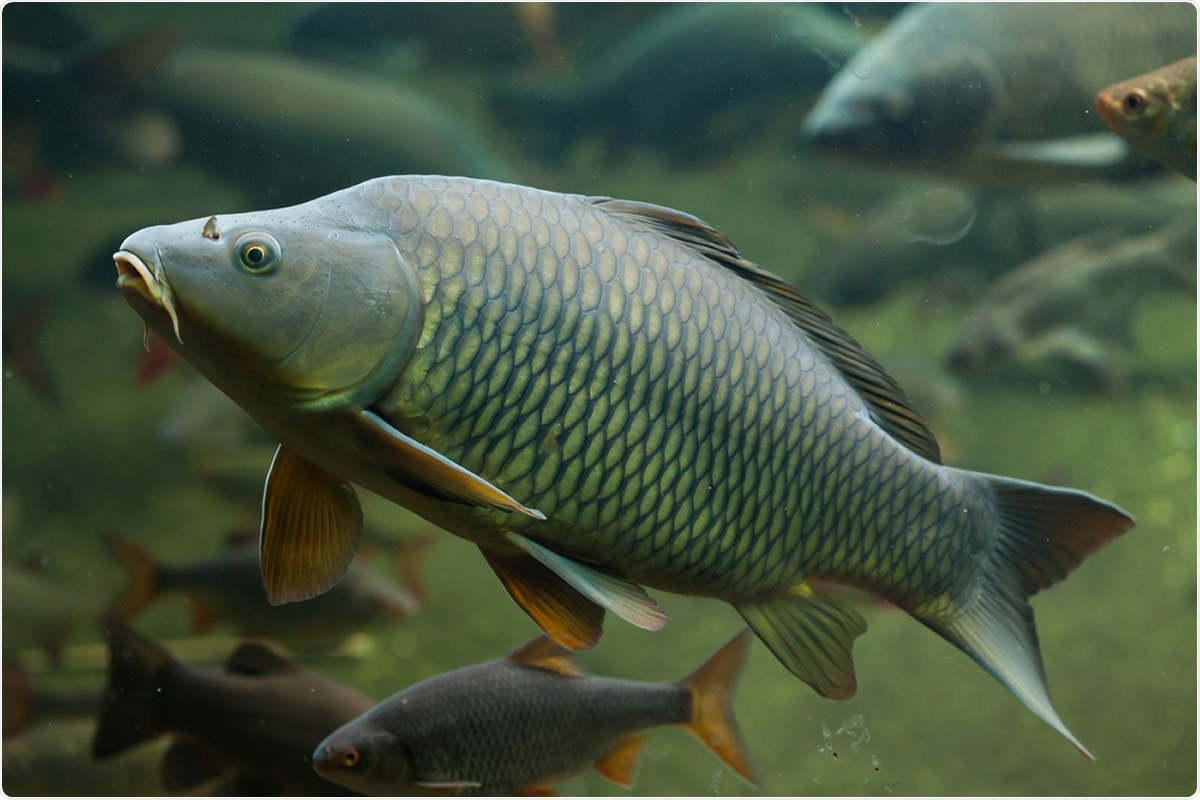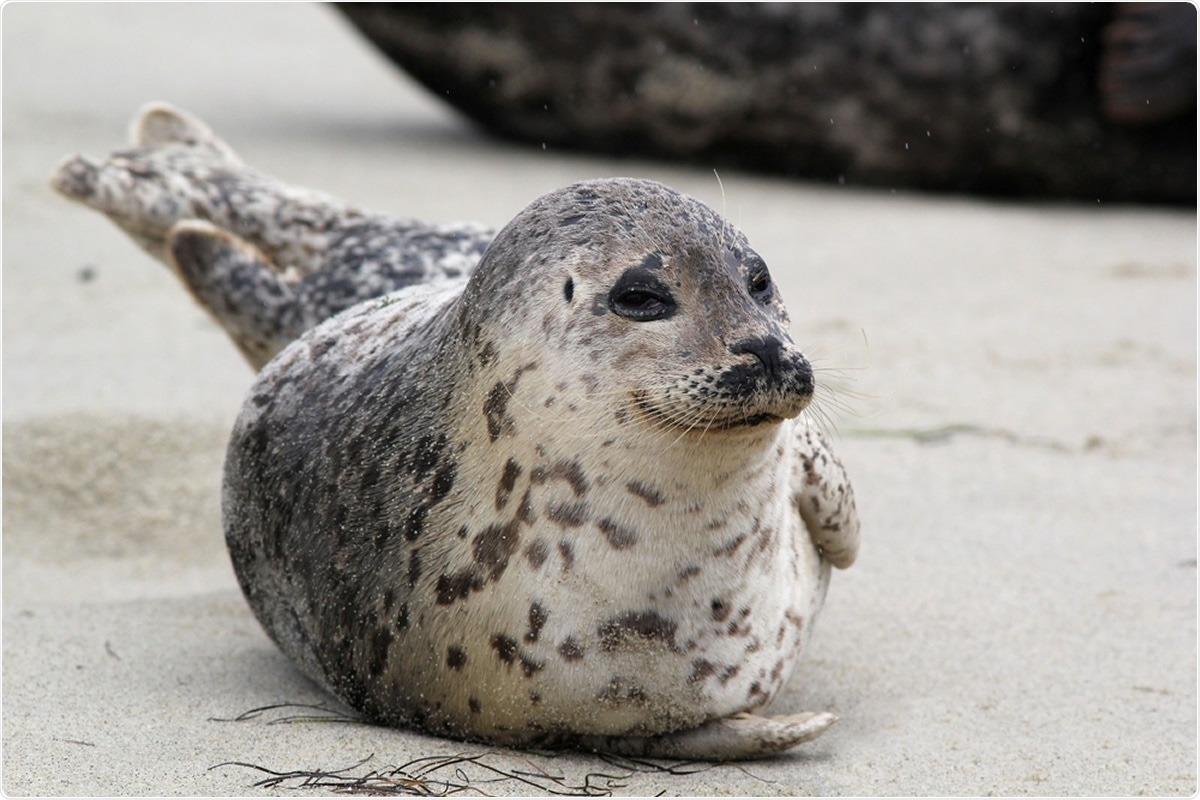Potential sea animal reservoirs for coronaviruses?
by Dr. Liji Thomas, MDThe COVID-19 pandemic has focused, yet again, intense research interest on coronaviruses, due to the high toll the novel coronavirus SARS-CoV-2 has taken on human life, health, economic well-being, and social activity. A recent paper published on the server Preprints in September 2020 reviews what is known about this viral infection in water life.
Severe acute respiratory syndrome coronavirus 2 (SARS-CoV-2) is known to be present in all parts of the world, which has prompted the current exploration of its presence in aquatic life forms, which may act as reservoirs, passing it on while they themselves remain asymptomatic. The researchers made use of prior studies for this purpose.
Coronavirus Characteristics
Coronaviruses (CoVs) are viruses that cause epithelial infections of the gut, respiratory tract, as well as several other tissues. It is an RNA virus, with a nucleocapsid envelope and spike-like glycoproteins that form a crown, or corona, giving it its name. These spikes are essential for the infection since they are the part that engages with the host cell and makes infection possible.
While most CoVs are known to infect humans, bats, camels, and birds, all of which are terrestrial species. However, as part of the order Nidovirales, they can infect crustaceans, fish, and marine mammals as well, many of which are commercially important. Among them, the alpha-, beta-, gamma- and delta-coronaviruses infect the respiratory tract in both humans and non-humans and the gut in other organisms. This includes the betaCoVs SARS-CoV and MERS-CoV (Middle East Respiratory Syndrome).
Both these are zoonotic viruses, with animal reservoirs. The CoVs also includes another subfamily containing two genera, Toro- and Bafini-virus, which have been found in Teleosts.

Wild common carp (Cyprinus carpio). Image Credit: Vladimir Wrangel
Coronaviruses in Water
Many researchers have investigated whether these viruses enter the water through sewage, whether treated or not. From the 1980s on, over a hundred pathogenic viruses have been found to be shed in human and animal feces, and thence to water bodies. This can lead to feco-oral transmission, allowing them to infect the digestive system and perpetuating the transmission chain. In fact, it is thought that 10 billion viruses may be present in a gram of feces.
Sewage contamination of water bodies is an ever-present possibility, especially with overflow or improper treatment before discharge. When bio-waste and hospital waste are also wrongly discharged into freshwater and marine environments, they can transfer these viruses into aquatic life. Several studies have demonstrated the presence of SARS-CoV-2 in sewage from infected areas, and the virus persists for weeks in infectious form.
The infective virus can enter free-living organisms in the water and be transmitted to humans, triggering new outbreaks. This risk must be evaluated, say the researchers.
Water-borne transmission is known to occur with alpha- and beta-CoVs, and the contaminated water may come into contact with the new host via swallowing, breathing of aerosolized droplets, through the skin or mucosal membranes, or aspiration into the lungs. CoVs are present in only minute concentrations in natural aquatic bodies, however.
Crustaceans
These organisms, also called shellfish, may harbor the virus in their exoskeleton. Still, since this is typically removed before eating, they have not been identified as potential agents of transmission to humans. Shrimps in Southeast and East Asia may harbor the yellow head virus.
The first Bafinivirus was found in white bream, but some Bafiniviruses colonize certain fish, such as the common carp, or the salmon, or bighead face fish. They have caused 70% mortality in fish farms, due to liver and kidney damage, with bleeding from the skin and into the abdomen. However, these are typically found in the gut of the host.
Since SARS-CoV-2 can tolerate a broader range of temperatures than earlier thought, between 4oC and 20oC in the air, it can live and replicate within fish, especially since they are ectothermic creatures with body temperature equalizing with the environment. Many such fish hosts have an adaptable body temperature. And the infection of marine mammals with Peneid shrimps that have a tropical habitat seems to indicate that this would not restrict future infection with the virus in these marine and aquatic creatures.
Waterfowl
Waterfowl seem to harbor the widest range of CoVs, about 96 varieties, if not more, from gamma- and delta-CoVs. Among the many waterfowl that feed with aquatic environments, ducks appear to be the group with the higher diversity. Some migratory birds have an expansive habitat and could, in theory, spread the virus effectively over a vast area. Research is required to explore the potential for CoV infection and transmission in these species.
Marine mammals
Seals in a Florida aquarium are known to have died of CoV-induced hemorrhagic pneumonia half a century ago, called the HSCoV (Harbor Seal coronavirus) outbreak. Other CoV infections in these species have involved viral bronchitis in beluga whales and bottlenose dolphins, both of which live in groups promoting viral spread. Thus, monitoring is essential to maintain the health of these species and to prevent onward transmission to other wild species, as well as to humans who come into contact with these animals in water parks or aquariums, in food markets, and when working with them in the wild.

Happy Harbor Seal. Image Credit: Randy Bjorklund / Shutterstock
Can CoV in Aquatic Life Infect Humans?
While there is no literature on the actual spread of aquatic CoVs to humans, respiratory viruses have been carried to humans from wild or captive animals, as in the H7N7 flu virus, which infected people via an autopsy of a seal, or through aerosols from a captive sneezing seal. The outcome, however, was conjunctivitis, rather than flu or respiratory disease. While many other viral infections have been detected in shellfish, involving human enteric viruses like hepatitis A virus, norovirus, rotavirus, and enterovirus, CoV outbreaks have not been recorded. H5N1 and A1 avian influenza viruses are associated with birds and are very contagious, spreading through infected duck meat and blood to humans. Ducks being very susceptible to CoVs, careful monitoring is required to make sure the same does not happen with these pathogens.
Current Recommendations
In the absence of recorded spread of SARSC-CoV-2 through aquatic organisms, the World Health Organization (WHO) and other health organizations have advised that wild animal markets should be avoided, while also ensuring that contact with farmed animals should be with due precautions. Meanwhile, further studies will occur to understand the effects of mutations and other genetic adaptations on changing routes of transmission between humans and animals, and the emergence of natural reservoirs.
*Important Notice
preprints.org publishes preliminary scientific reports that are not peer-reviewed and, therefore, should not be regarded as conclusive, guide clinical practice/health-related behavior, or treated as established information.
Journal reference:
- Nunez-Nogueira, G. et al. (2020). Aquatic Biota is Not Exempt from Coronavirus Infections: An Overview. Preprints. doi: 10.20944/preprints202009.0198.v1. https://www.preprints.org/manuscript/202009.0198/v1